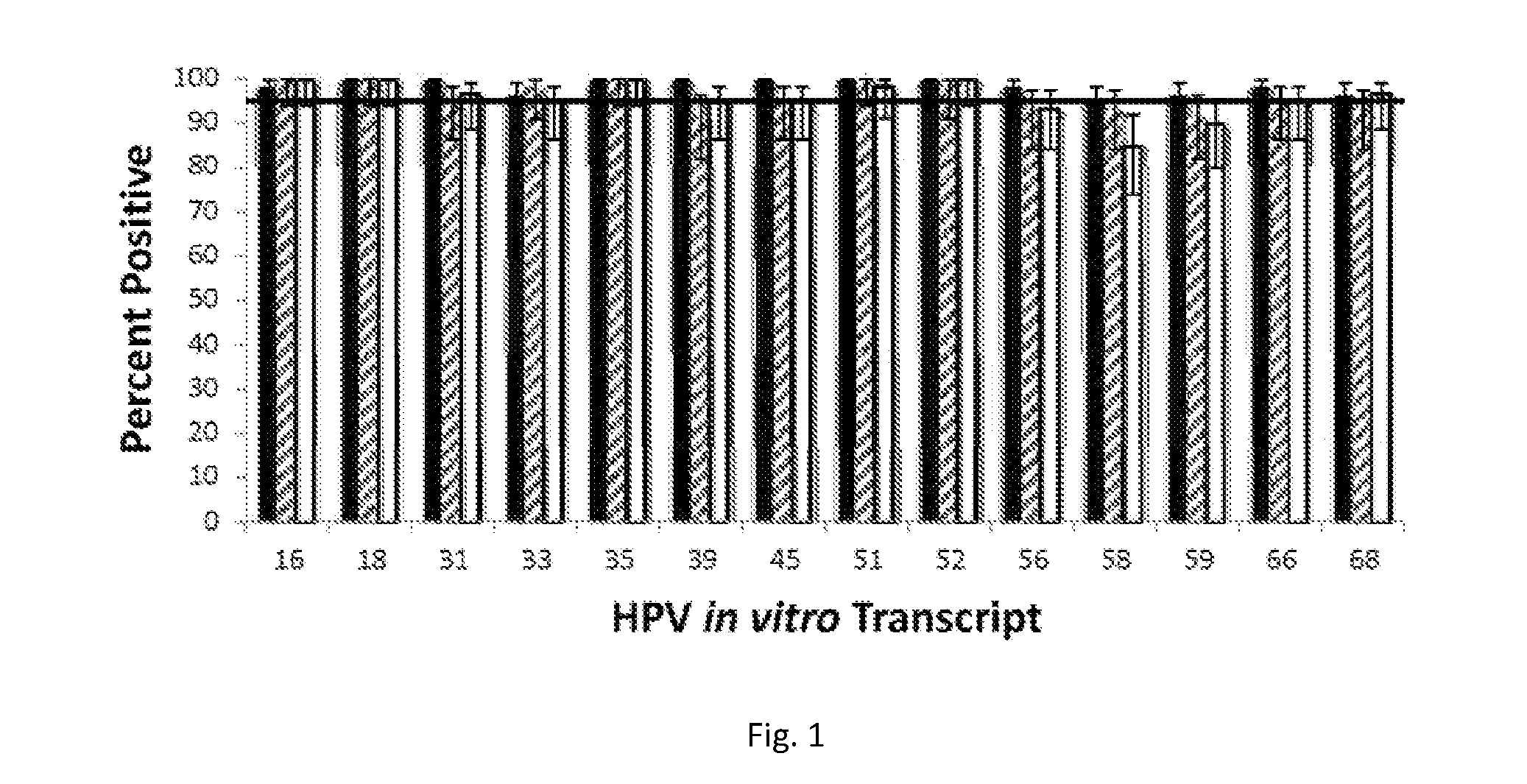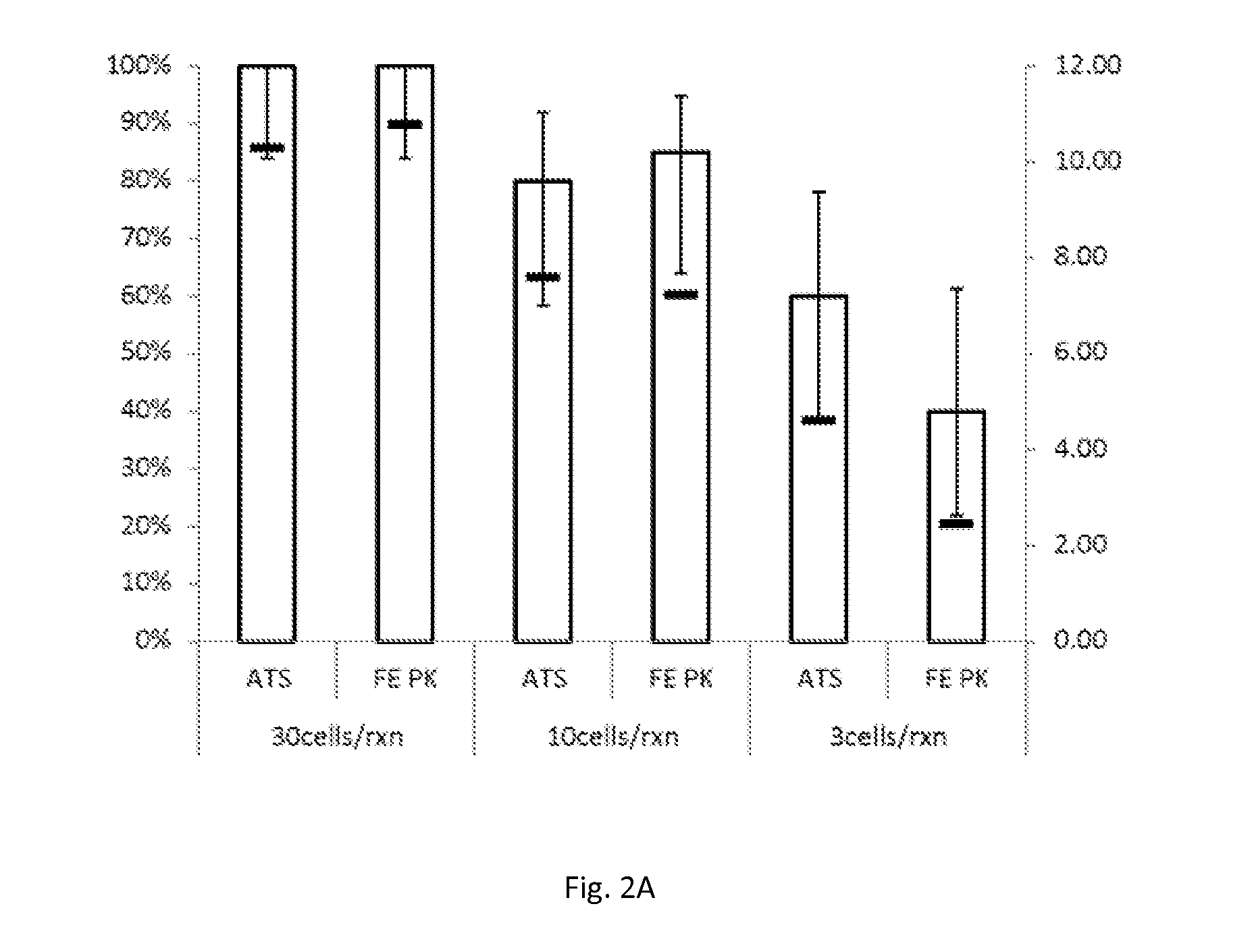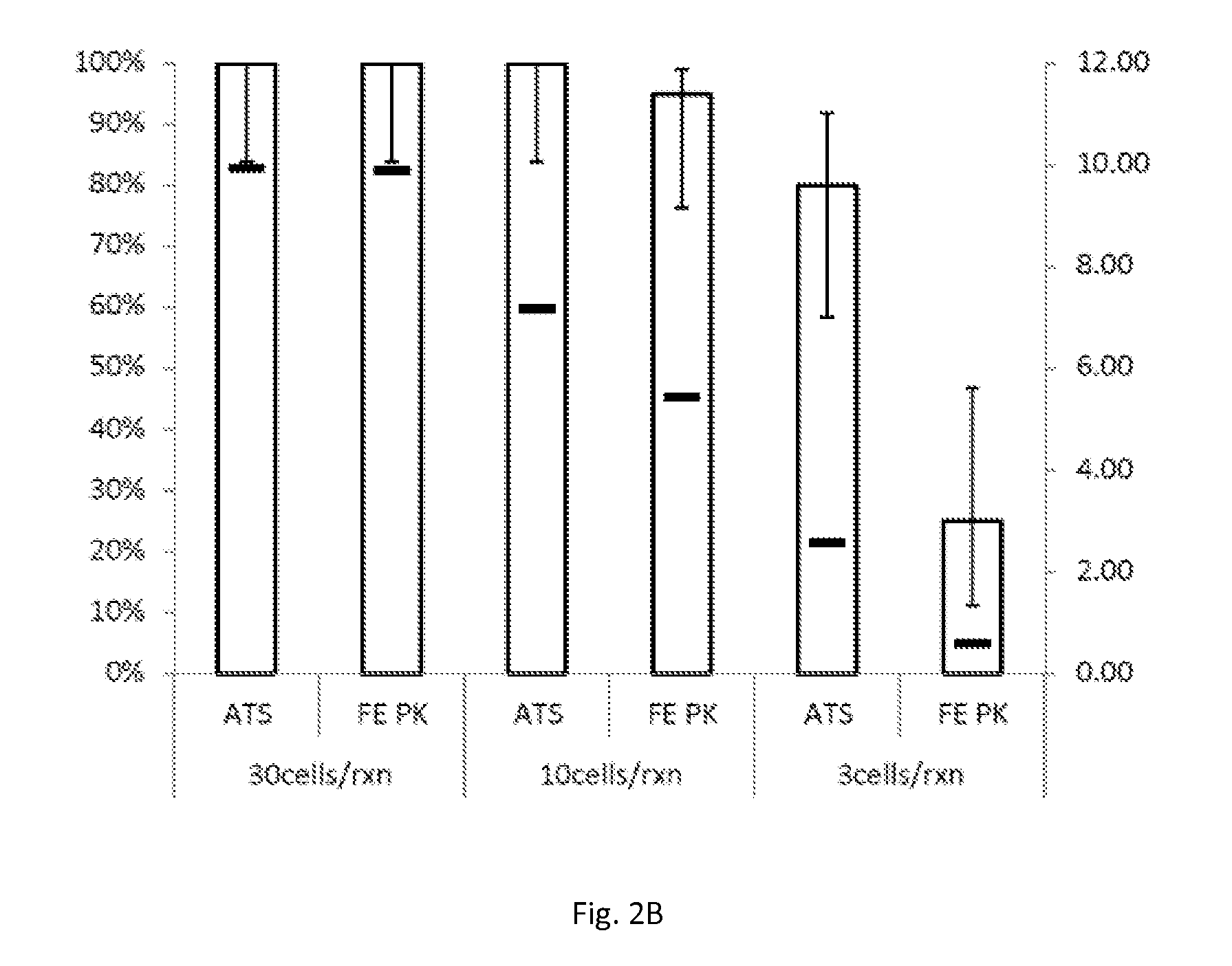Method of isolating nucleic acid from specimens in liquid-based cytology preservatives containing formaldehyde
a cytology preservative and formaldehyde technology, applied in the biotechnology field, can solve the problems of only limited use of extracted rna as a pcr template, unsatisfactory use of high temperature conditions, and compromise the utility of nucleic acid in subsequent analyses
- Summary
- Abstract
- Description
- Claims
- Application Information
AI Technical Summary
Benefits of technology
Problems solved by technology
Method used
Image
Examples
example 1
Establishing Analytical Sensitivity of an HPV Assay Using Synthetic Transcripts
[0072]In vitro synthesized transcripts served as templates for amplification in conventional TMA reactions performed using an APTIMA HPV assay for amplification and detection of HPV RNA. The transcript copy number used for each different HPV type corresponded to the limit of detection (LOD) for the APTIMA HPV assay that had been established in preliminary procedures using specimens preserved in THINPREP liquid-based cytology preservative (i.e., the model preservative that does not contain formaldehyde). The LOD is the copy level that leads to a minimum positivity of at least 95% for all specimens tested. In this instance, in vitro transcripts were all used at 20 to 600 copies / reaction, as appropriate.
[0073]Three different sample processing conditions were tested. First, in vitro transcripts were added to THINPREP® liquid-based cytology samples in STM (1 ml sample and 2.9 ml STM), and then processed accord...
example 2
Establishing Analytical Sensitivity of an HPV Assay Using Human Cell Lines Containing HPV
[0076]Human cell lines containing HPV were spiked into specimen pools of the SUREPATH liquid-based cytology preservative, stored for 7 days at 25° C., and then tested at half-log dilutions (3 to 30 cells / reaction) after treatment with either the combination of the demodifier solution and proteinase K at 90° C. for 15 minutes, or proteinase K alone at 65° C. for 2 hours. As in Example 1, the combination of demodifier solution and proteinase K was conveniently delivered as a single aliquot by reconstituting lyophilized proteinase K with the demodifier solution. Of course, there is no requirement for combining the reagents in this fashion. Cells used in this procedure were: (1) SiHa cells (expressing HPV16); (2) HeLa cells (expressing HPV 18); and (3) MS751 cells (expressing HPV 45). Again, HPV nucleic acids were captured, amplified and detected using the APTIMA HPV assay in accordance with the man...
example 3
Enhancing Recovery of Amplifiable mRNA from Cellular Specimens Stored in a Liquid-Based Cytology Preservative Containing Formaldehyde
[0079]To mimic clinical specimens, ten pools of residual specimens in SUREPATH liquid-based cytology preservative, previously determined to be HPV-negative using the APTIMA HPV assay, were split in half and spiked with either SiHa or HeLa cells. All tubes were stored neat at 25° C. for up to 42 days. Aliquots from each pool were diluted in a 1:2.9 SUREPATH:STM matrix to final cell concentrations of 30 and 100 cells / reaction on each day of testing. Samples were processed either by treatment with proteinase K alone for 2 hours at 65° C., or with the combination of demodifier solution and proteinase K (the combination being delivered as a single aliquot of proteinase K reconstituted with demodifier solution) for 15 minutes at 90° C. Again, HPV nucleic acids were captured, amplified and detected using the APTIMA HPV assay in accordance with the manufacture...
PUM
| Property | Measurement | Unit |
|---|---|---|
| Temperature | aaaaa | aaaaa |
| Temperature | aaaaa | aaaaa |
| Temperature | aaaaa | aaaaa |
Abstract
Description
Claims
Application Information
 Login to View More
Login to View More - R&D
- Intellectual Property
- Life Sciences
- Materials
- Tech Scout
- Unparalleled Data Quality
- Higher Quality Content
- 60% Fewer Hallucinations
Browse by: Latest US Patents, China's latest patents, Technical Efficacy Thesaurus, Application Domain, Technology Topic, Popular Technical Reports.
© 2025 PatSnap. All rights reserved.Legal|Privacy policy|Modern Slavery Act Transparency Statement|Sitemap|About US| Contact US: help@patsnap.com



